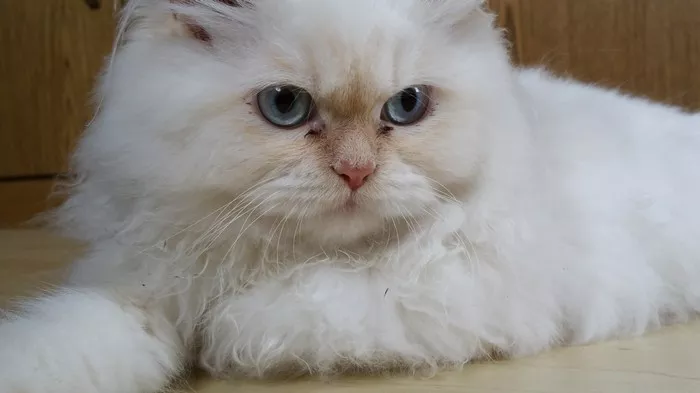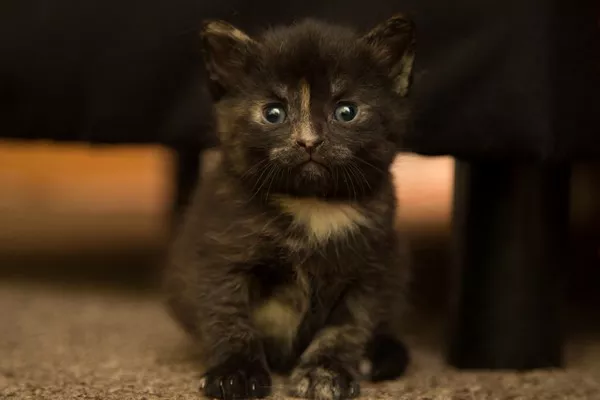Himalayan cats, often referred to as “Himmies,” are one of the most visually striking breeds within the feline world. With their lush, long coats and striking blue eyes, they are often compared to the Persian and Siamese breeds from which they originated. This article explores the reputation of Himalayan cats as high-maintenance pets, delving into their grooming needs, general care requirements, and offering practical advice for potential and current owners. We will also provide a comprehensive guide on grooming techniques to ensure these beautiful creatures are kept in optimal condition.
Understanding the Himalayan Cat Breed
Himalayan cats were developed by crossing Siamese and Persian cats, aiming to achieve the color points of the Siamese with the long, luxurious fur of the Persian. This blend not only resulted in a cat of stunning appearance but also one with distinct needs.
Breed Characteristics and Temperament:
Himalayans inherit their long, flowing coats from their Persian ancestors, while their pointed coloration comes from their Siamese lineage. Typically, they have a calm and placid temperament, also reminiscent of Persians. They are often gentle, sociable, and enjoy lounging around the home, making them excellent companions, albeit with a need for regular human interaction.
Are Himalayan Cats High Maintenance?
The question of whether Himalayans are high maintenance can largely be answered by looking at their grooming needs, health considerations, and the attention they require due to their sociable nature.
Grooming Requirements
The most time-consuming aspect of caring for a Himalayan cat is undoubtedly its grooming needs. Their long, dense coat is prone to matting and tangling if not regularly cared for.
Daily Brushing: It is advisable to brush your Himalayan cat daily. This routine helps prevent the formation of mats and keeps the fur soft and clean. Use a steel comb or a slicker brush, which can effectively remove loose hairs and prevent tangles.
Bathing Routine
While not all cats may need frequent baths, Himalayan cats benefit from a monthly bath to keep their coats in pristine condition. Bathing helps reduce the amount of shedding and keeps the skin healthy.
Steps for Bathing:
Preparation: Before bathing, thoroughly brush the coat to remove any tangles or mats.
Choosing the Right Shampoo: Use a high-quality cat shampoo that is gentle on the skin and designed for cats with long hair.
Bathing Process: Ensure the water is warm (not hot) and calmly wet the cat’s fur, apply shampoo, and carefully massage it in. Rinse thoroughly to prevent residue that can irritate the skin and attract dirt.
Drying: Towel dry gently and then use a hairdryer on a low heat setting to help dry the coat thoroughly. Keep the dryer moving to avoid heat concentrating on any one spot.
Eye Care
Himalayans, like their Persian relatives, often have tear staining issues due to their brachycephalic (flat) facial structure. Regularly wiping the corners of the eyes with a soft, damp cloth can help prevent the buildup of tear stains.
Diet and Nutrition
A well-balanced diet is crucial for maintaining the health and coat quality of a Himalayan cat. High-quality cat food that contains essential fatty acids can help keep their fur glossy and healthy.
Recommendations for a Healthy Diet:
Protein-rich Foods: Ensure that the diet is high in protein to support coat and skin health.
Omega Fatty Acids: Foods rich in omega-3 and omega-6 fatty acids can help maintain the luster and health of the coat.
Hydration: Adequate water intake is essential, especially if the cat has a predominantly dry food diet.
Health Maintenance
Himalayans are prone to certain genetic health issues, such as polycystic kidney disease (PKD) and respiratory problems due to their facial structure. Regular veterinary check-ups can help catch and manage these conditions early.
Routine Health Checks:
Annual Vet Visits: Regular check-ups can help monitor the overall health and catch any emerging health issues.
Vaccinations and Parasite Control: Keep up with vaccinations and regular treatments for parasites like fleas and worms.
Social Needs and Environmental Considerations
Himalayan cats require a moderate amount of social interaction. They bond closely with their owners and can become stressed if left alone for long periods.
Creating a Stimulating Environment:
Playtime: Regular play sessions help keep them mentally and physically active.
Comfortable Resting Areas: Provide several cozy spots for resting, as Himalayans love to lounge.
Conclusion: Balancing Care with Companionship
While Himalayan cats do require a significant amount of care, particularly in grooming, the rewards of owning such a majestic cat are numerous. They are affectionate, peaceful, and form strong bonds with their owners, making them ideal companions for those who are willing to invest the time into their care. Understanding and meeting their needs ensures that these beautiful cats lead a healthy, happy, and fulfilling life. With the right care and attention, the high maintenance of a Himalayan cat transforms into a deeply rewarding relationship that enriches the lives of both the cat and its owner.

























